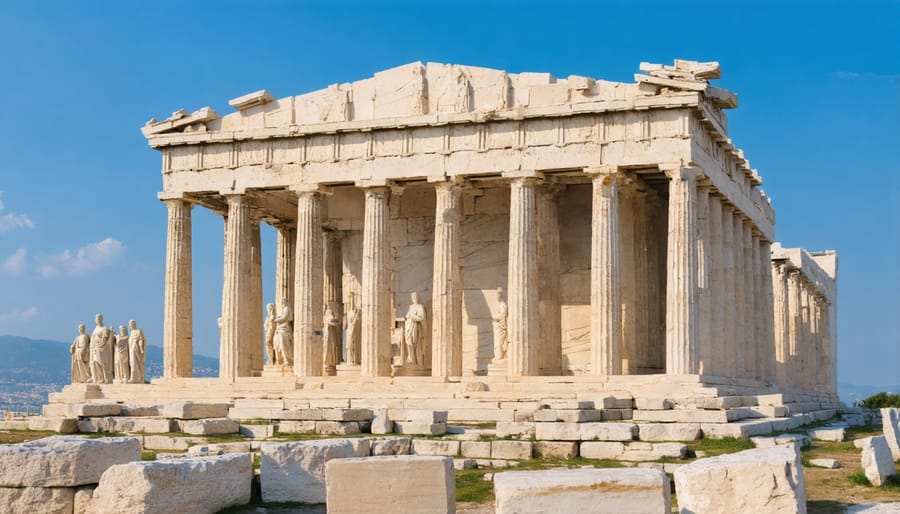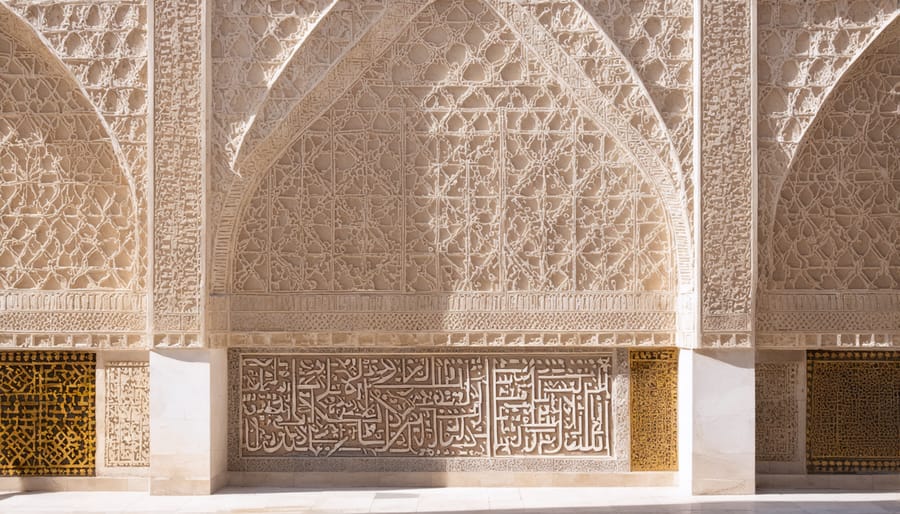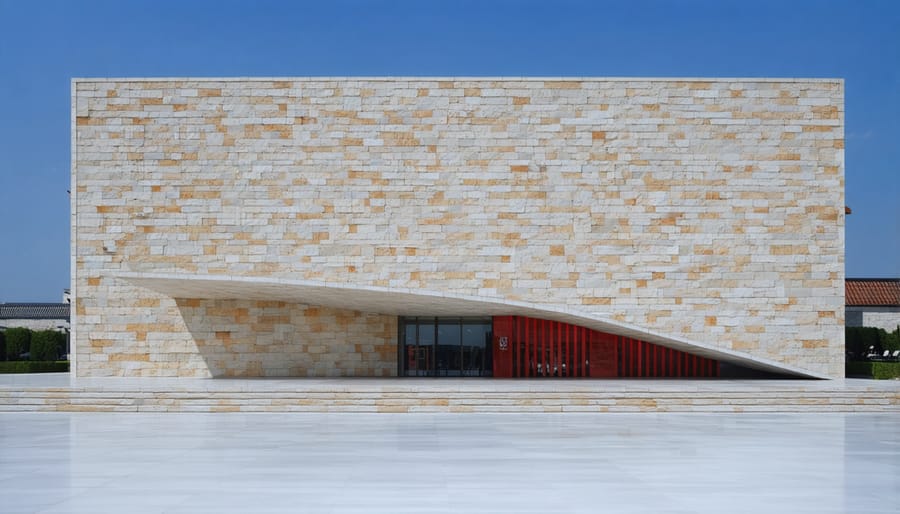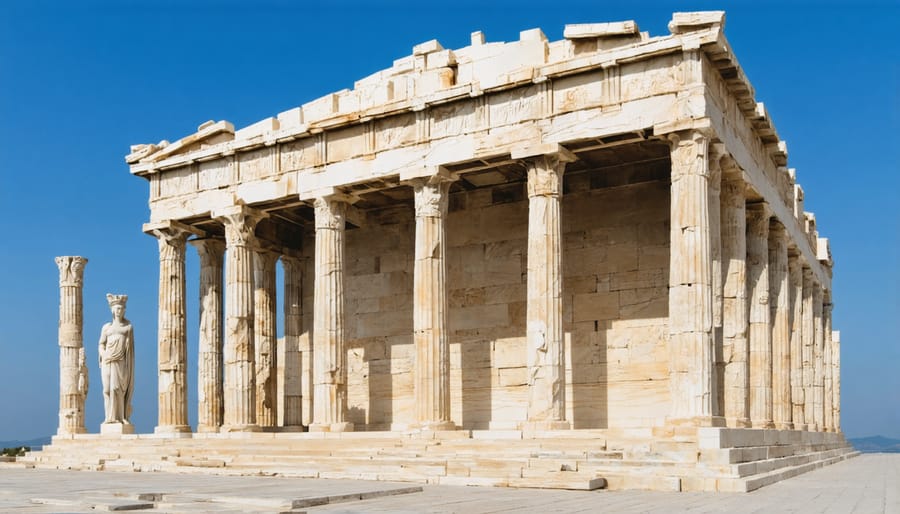Natural stone, with its timeless beauty and cultural significance, has shaped human civilization for millennia. From the soaring pyramids of Egypt to the intricate temples of Asia, stone architecture stands as a testament to humanity’s diverse cultural expressions and shared appreciation for enduring materials.
In every corner of the world, different societies have developed unique relationships with stone, transforming this raw material into powerful symbols of their beliefs, values, and technological achievements. Ancient civilizations carved their stories into granite and marble, while modern architects continue to reimagine stone’s possibilities in contemporary design.
Understanding global stone architecture reveals more than just construction techniques – it offers insights into how different cultures view their relationship with the natural world, express their spiritual beliefs, and demonstrate their artistic capabilities. Whether it’s the precision-cut blocks of Incan walls, the delicate carved reliefs of Indian temples, or the bold modernist statements of today’s urban landscapes, each application of stone tells a distinct cultural narrative.
As our world becomes increasingly interconnected, appreciating these diverse architectural traditions enriches our global design vocabulary and inspires innovative approaches to sustainable, culturally conscious construction.
Ancient Stone Stories: Cultural Foundations
Mediterranean Marble Legacy
The Mediterranean’s architectural legacy is profoundly embodied in its marble monuments, where Greek and Roman civilizations crafted powerful cultural narratives through stone. The Parthenon, with its pristine Pentelic marble columns, stands as a testament to Greek precision and mathematical harmony. This iconic structure established architectural principles that would influence building practices for millennia to come.
Roman architects expanded upon Greek foundations, developing innovative techniques to source and transport massive marble blocks from quarries across their vast empire. The Pantheon’s magnificent dome, constructed from carefully graduated marble sections, demonstrates their mastery of both engineering and aesthetics. These ancient builders understood that marble wasn’t merely a construction material – it was a medium for expressing power, cultural sophistication, and divine connection.
The cultural significance of Mediterranean marble extended beyond temples and public buildings. Roman villas featured intricate marble mosaics and sculptural elements that communicated their owners’ status and artistic refinement. The material’s translucent properties and natural veining patterns were expertly utilized to create dramatic effects in both interior and exterior spaces.
This architectural heritage continues to influence modern design, with contemporary architects drawing inspiration from classical proportions and installation techniques. The enduring appeal of Mediterranean marble work lies in its ability to combine practical durability with profound cultural symbolism, creating spaces that resonate across centuries.

Eastern Stone Traditions
In Eastern cultures, stone architecture transcends mere construction to embody deep spiritual and philosophical principles. Throughout Asia, the careful selection and placement of natural stone reflects centuries-old traditions of harmony with nature and cosmic order. Japanese rock gardens, or karesansui, exemplify this philosophy, using carefully positioned stones to represent mountains, islands, and flowing water, creating spaces for meditation and contemplation.
Chinese architecture traditionally incorporates stone elements to symbolize permanence and imperial authority. The marble terraces of the Forbidden City and the intricately carved stone balustrades of temple complexes demonstrate both technical mastery and cultural symbolism. These structures often feature stone dragons, phoenixes, and other mythological creatures, each carrying specific cultural meanings and blessings.
In India, ancient temple architecture showcases remarkable stone craftsmanship, particularly in sites like Ellora and Ajanta caves. These monuments, carved from single rock faces, represent the pinnacle of stone artistry and engineering. The precise joinery techniques used in these structures continue to influence modern stone applications.
Korean stone traditions emphasize natural forms and minimal intervention, as seen in the stone pagodas and fortress walls that dot the landscape. This approach reflects Buddhist and Confucian principles of respecting natural materials while adapting them for human needs.
Today, contemporary Asian architects blend these traditional principles with modern design, creating innovative structures that honor cultural heritage while meeting current architectural demands.
Sacred Stones: Religious Expression in Architecture
European Cathedral Culture
European cathedral architecture represents one of history’s most profound expressions of stone craftsmanship, with Gothic and Romanesque styles showcasing the versatility and grandeur of natural stone. The Romanesque period, spanning from the 6th to 11th centuries, featured thick walls, rounded arches, and robust pillars crafted primarily from limestone and sandstone. These massive structures emphasized stability and permanence, reflecting medieval Europe’s desire for enduring sacred spaces.
The Gothic revolution of the 12th century introduced revolutionary architectural elements that pushed stone engineering to new heights. Flying buttresses, pointed arches, and ribbed vaults allowed for taller, lighter structures with expansive windows. Master stonemasons developed innovative techniques to cut and place stones precisely, creating soaring spires and delicate tracery that seemed to defy gravity.
Notable examples include Notre-Dame de Paris, where limestone blocks were carefully selected for their strength and aesthetic qualities, and Milan Cathedral, featuring intricate marble sculptures and spires. The architectural elements weren’t merely structural; they carried deep symbolic meaning. Vertical lines drew eyes heavenward, while carefully carved stone figures told biblical stories to largely illiterate congregations.
These cathedrals continue to influence modern architecture, demonstrating how natural stone can be both structurally robust and aesthetically sophisticated. Contemporary architects still draw inspiration from these medieval masterpieces, adapting classical stone techniques for modern applications.
Islamic Geometric Patterns
Islamic geometric patterns represent one of the most sophisticated expressions of cultural artistry in stone architecture. These intricate designs, found in mosques, palaces, and public buildings throughout the Islamic world, combine mathematical precision with spiritual symbolism. The patterns typically feature repeating geometric shapes, including stars, polygons, and interlaced lines, all meticulously carved into limestone, marble, and other natural stone surfaces.
The absence of figurative imagery in Islamic religious architecture led to the development of these complex geometric patterns. Craftsmen developed sophisticated techniques to create designs that reflect the infinite nature of Allah through endless repetition and mathematical harmony. Using simple tools like compass and straightedge, they created patterns that demonstrate remarkable understanding of geometry and symmetry.
Common motifs include the eight-pointed star, which represents divine perfection, and the arabesque, featuring flowing vegetative patterns. These designs are often combined with calligraphy and floral elements, creating layers of visual and spiritual meaning. The precision required to execute these patterns in stone speaks to the exceptional skill of medieval Islamic stoneworkers.
Today, these traditional patterns continue to influence contemporary architecture and design. Modern stone-cutting technologies, including CNC machines and water jet cutting, allow architects to recreate these intricate designs with unprecedented accuracy while maintaining their cultural significance and visual impact.

Modern Cultural Stone Applications
Contemporary Cultural Centers
Contemporary cultural centers showcase how modern stone artistry continues to reflect cultural identity in striking ways. The National Museum of African American History and Culture in Washington, D.C., features a three-tiered corona clad in bronze-colored cast-aluminum panels, paying homage to African architectural elements while creating a powerful contemporary statement. In Qatar, the National Museum’s design by Jean Nouvel draws inspiration from the desert rose crystal, using interlocking disks of reinforced concrete and steel to create a sophisticated interpretation of traditional Islamic architecture.
The Harbin Opera House in China demonstrates how natural stone and modern materials can merge seamlessly, with its fluid architecture echoing the surrounding wetlands and local geology. Its white aluminum panels and locally sourced granite create a dialogue between tradition and innovation. Similarly, the Canadian Museum for Human Rights incorporates indigenous peoples’ connection to the land through its extensive use of Tyndall limestone, quarried from the Manitoba region.
These cultural centers prove that stone remains a powerful medium for expressing cultural heritage while embracing contemporary architectural innovation. They serve not only as repositories of culture but as physical manifestations of how different societies interpret their identity through built form.

Sustainable Cultural Heritage
Natural stone continues to play a vital role in preserving cultural heritage while adapting to modern sustainability needs. Through sustainable stone architecture, communities worldwide are finding innovative ways to maintain their historical narratives while embracing environmental responsibility.
Modern architects and designers increasingly draw inspiration from traditional stonework techniques, incorporating them into contemporary buildings that honor cultural identity. This approach not only preserves ancient craftsmanship but also ensures these valuable skills are passed down to future generations. From the restoration of historical monuments to the construction of new cultural centers, natural stone serves as a bridge between past and present.
The durability of stone makes it an ideal material for cultural preservation. Unlike many modern building materials, stone structures can last for centuries with minimal maintenance, making them both environmentally and culturally sustainable. This longevity allows cultural stories to be told through architecture for generations to come.
Communities are also discovering that traditional stone-building techniques often align naturally with modern sustainability goals. Many ancient methods of stone construction require minimal energy input and utilize local materials, principles that are increasingly valued in contemporary green building practices. This convergence of traditional wisdom and modern environmental consciousness creates buildings that are both culturally meaningful and environmentally responsible.
Stone Selection for Cultural Expression
Selecting stone materials for cultural expression requires careful consideration of both traditional significance and modern architectural requirements. When choosing stone for cultural stone applications, it’s essential to understand the historical context and symbolic meaning behind different stone types within specific cultures.
Consider limestone’s prominence in Middle Eastern architecture, where its light color and thermal properties reflect both practical needs and cultural preferences. Similarly, granite’s use in East Asian designs often symbolizes strength and permanence, while marble in Mediterranean cultures represents luxury and refinement.
Color selection plays a crucial role in cultural expression. Red sandstone, widely used in Indian architecture, carries spiritual significance and represents the earth element. Meanwhile, black granite in contemporary African-inspired designs often references traditional ceremonial spaces and ancestral connections.
Texture and finish choices should align with cultural authenticity. For instance, hand-carved surfaces might better reflect traditional craftsmanship in Asian designs, while polished surfaces might suit modern interpretations of classical European styles. Consider these aspects when selecting finish treatments:
– Honed surfaces for subtle elegance in contemporary Japanese-inspired spaces
– Rough-hewn textures for rustic Mediterranean aesthetics
– Bush-hammered finishes for modern African-influenced designs
– Polished surfaces for formal Classical revival projects
Pattern and layout decisions significantly impact cultural authenticity. Traditional Islamic geometric patterns require precise stone cutting and arrangement, while Chinese garden designs often emphasize natural stone formations and asymmetrical placement.
When incorporating cultural elements in modern projects, consider:
– Local material availability and sustainability
– Climate compatibility and weathering characteristics
– Maintenance requirements and long-term durability
– Budget constraints and installation complexity
– Building codes and structural requirements
Success in cultural stone expression often comes from balancing authenticity with contemporary functionality. Consult with cultural experts and local artisans when possible to ensure respectful and accurate representation of traditional elements in modern contexts.
Throughout history, stone has served as humanity’s enduring medium for cultural expression, carrying the weight of our stories across generations. From the ancient pyramids of Egypt to the intricate temple carvings of Asia, stone continues to bridge our past with our present, speaking volumes about human creativity and cultural values.
As we move forward in the 21st century, stone remains a powerful storyteller in contemporary architecture. Modern designers and architects are finding innovative ways to incorporate traditional stone elements while embracing new technologies and sustainable practices. This fusion of old and new allows buildings to maintain cultural authenticity while meeting modern functional requirements.
The future of stone in architectural expression looks promising, with advanced fabrication techniques enabling previously impossible designs. Digital modeling and precision cutting technologies are opening new possibilities for cultural expression, while maintaining stone’s timeless appeal. Yet, what remains constant is stone’s ability to ground our buildings in local identity and cultural heritage.
As global architecture becomes increasingly homogenized, stone’s role in preserving and expressing cultural distinctiveness becomes even more crucial. It reminds us that while building methods may evolve, the fundamental human desire to tell our stories through architecture remains unchanged. Stone continues to be not just a building material, but a bridge between cultures, generations, and ideas – a testament to humanity’s enduring creative spirit.










